
The sea cliffs of the Pembrokeshire National Park are often cited as the best sea cliff climbing in the world, and justifiably so. The mix of superb quality and variety of rock, the wildlife that inhabits this area, stunning scenery and thousands of recorded rock climbs with not a bolt in sight make Pembrokeshire a truly special place to climb.
The usual sea cliff challenges of having to abseil in to start your route, and tide and swell considerations are added to by the need to check for climbing restrictions because of nesting sea birds, as well as many of the rock climbs being within MOD owned land. Range East and Range West combine to create the second largest artillery range in Europe and are regularly used by many regiments from around the world to train for war.
Climbers visiting Pembrokeshire for the first time will quite rightly head for the most popular climbs to tick off the three star classics and of course there is nothing wrong with that, I did too on my first visit to Pembrokeshire. I now however regularly head to the lesser visited routes and crags with mates and clients and I'm always amazed at how deserted they tend to be. For this reason I would like to highlight some fantastic climbing locations and routes that far too often get overlooked by most visiting climbers, and hopefully get people fired up to stray off the beaten track. Here is a list of routes, not designed to be a "puerile tick list" but to shine light on some fantastic routes that just don't get the traffic they deserve.
Slender Slab (S), Severe 4a, Giltar Slabs, Penally Area
I first climbed this route guiding two clients and loved the style of climbing. Slender Slab (like the name would suggest) climbs a two foot wide slab that diagonally cuts through and up two limestone walls. It can be started from a beautiful pebble beach at low tide, in one large 45m pitch, or can be accessed at high tide by abseiling to a large hole/cave belay at a third height to the left facing in. Once the slab section is reached, the climbing is wonderfully balancey with the left hand in the break where the slab meets the wall and the right hand on copious holds on the upper wall, with excellent and numerous opportunities for protection. The position is fantastic and the leader can position their belay at the top of the slab, so as to have a good view of their partner/s seconding the route.

Running Bear (HS 4b), HS 4b, 4b, Sitting Bull Buttress, Range East
This was another route that I climbed for the first time with a client. We had done some routes on the Castle and I thought it would be worth a look - it was. I am continually amazed at how beautiful the coast line of Pembrokeshire is. After a large free hanging abseil, Alex joined me and we started to look around. In this incredible arena of cliffs, boulders, sea and wildlife, you forget everyday life and become a kid again, exploring, discovering and generally playing about. Sitting Bull Buttress stands away from the back wall of the main cliff and has excellent rock in a picturesque position. As I was belaying Alex up the final pitch I saw something just off the shore that I had heard about before but never seen, an otter swimming, bobbing and diving through the turquoise shallows. I pointed it out to Alex and he stopped climbing, I stopped belaying and we both just stayed where we were watching this lovely creature until it disappeared off somewhere. Great route and great surroundings.
St. Non's Pinnacle (VS 4b), VS 4b/Alpine PD, St. David's Area
Yes, this is an adventure. It's tricky to get to, you can easily get cut off by the tide and the top ridge is most definitely loose. Don't let these factors put you off though, Pat Littlejohn was on the first ascent of this route and it carries a lot of his hallmarks; Good line, commitment and adventure. Start by scrambling down the west side of Initiation Slabs at low tide and continue scrambling round the coast line at sea level until below the Pinnacle. There is a ledge just above high tide to belay from. The first pitch follows a vertical crack, straight up the middle of the seaward face of the pinnacle but is amply protected. The climbing takes you through rounded clumps of Thrift and nodding Scabious but this adds to rather than detracts from the climbing. Once the initial wall is overcome, a step left and a beautifully exposed couple of moves up the arete leads you to a tottering pile of blocks, from which you take a belay (there is another piece of gear further up the ridge that you can clip one of your ropes through and bring back to the belay). The final pitch is easy but sketchy, and all the better for it. The sharp, spiky ridge is climbed on the left hand side with care. You can place many slings round blocks and spikes here, the climbing here is easy but do place the slings as running belays and don't pull on anything too hard… Great stuff.
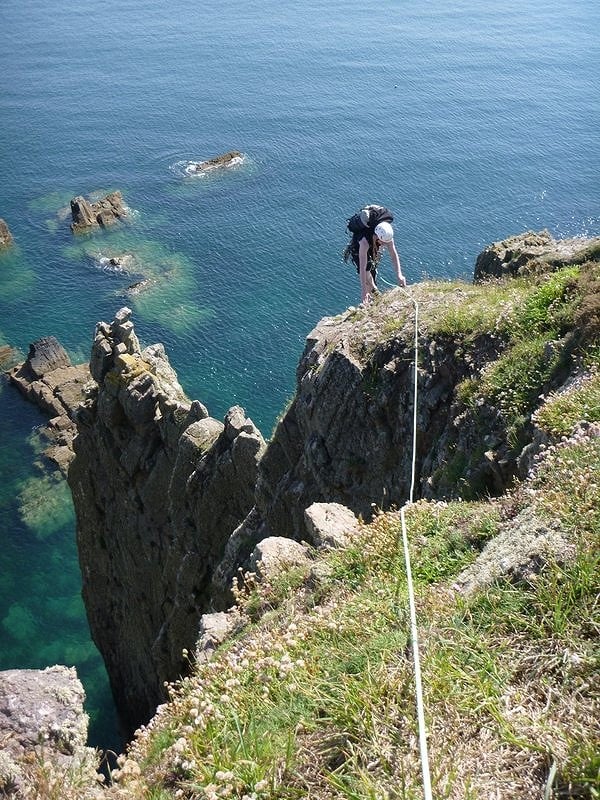
Inner Space (HVS 4c), HVS 4c,4c, Mother Carey's, Lydstep Area
This is the type of route you might not think goes at the grade, but it does! To get to it, take a 60m abseil down the line of The Cracks. When you reach the base, pull the bottom of the abseil rope into the through cave and drop it down the short wall to the start of the Inner Space back wall and abseil again. You'll now find yourself in an atmospheric underground position, below an alien looking wall of colourful, contorted, conglomerate rock that is usually greasy. Don't let this put you off - although it's worth waiting for a good dry spell before an attempt. Looking out and up to the first belay, your eyes focus on a large chock stone wedged at the top of a parallel cleft, 1m wide and 25m high and seems a very long way away. A good consideration with rope work will do you well for this pitch. Climb the back wall on wonderful holds and many protection opportunities, but don't place too much and make sure you extend the ones you do place - you will be cursing yourself later if you don't… As your belayer gets further and further away from you and the darkness grows as you climb upwards towards the roof, you gain the start of the cleft. An unnerving and airy move out to gain the right wall of the cleft is made and relief is found when you realise that with your back on the right wall and feet on the left, it actually feels pretty secure. Protection is above your head and plentiful. Now a back and footing traverse thrutch leads out towards the light. Depending on how good your earlier rope work was will pay dividends or punish, as you push on for the chock stone belay. Once you arrive at the belay and have got over the initial worry about its stability, (I place gear in the crack above the chock stone) you can start to relax and amuse yourself with listening to your mate seconding. I recently took a client on this route, when he got to the belay with wide eyes, his initial comment was merely "that was insane!" The second pitch takes you back into the outside world, above the bottom pitch of Deep Space. The exposure below you is fantastic but the pitch is short lived and you soon arrive back to the horizontal. One of the best HVS's in Pembrokeshire in my eyes.
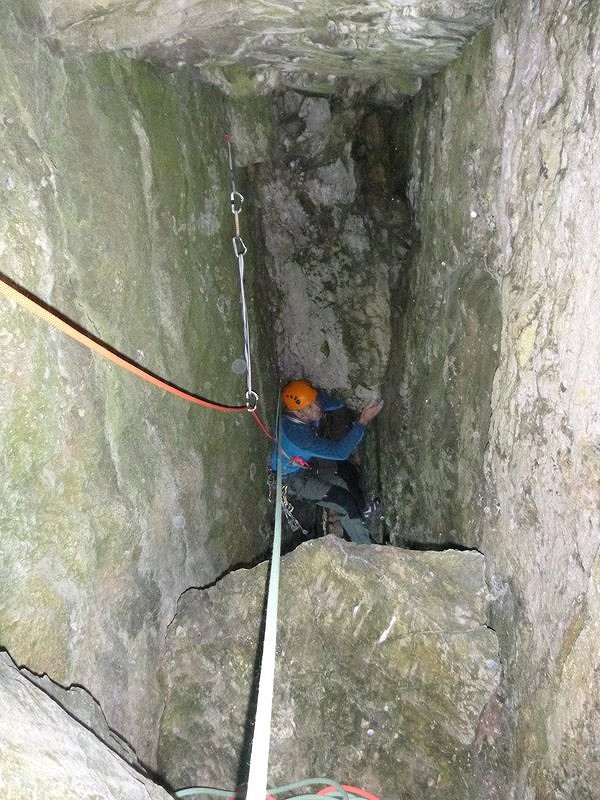
Mad Hatter's Tea Party (E1 5a), E1 5a, 5a, Madman's Point, Stack Rocks Area
This is one of many routes first climbed by Paul Donnithorne in an area in which you'd be very unlikely to see another climber all day. When the 60m abseil is descended you are left in a fantastically secluded area, with sea stacks looming up above you. Take all of this in before starting the route, as it's a special place to be. The bay to the east is a regular seal pupping area and for good reason as it's (other than abseiling in) unapproachable from the land. The route gives some impressively steep but attainable climbing up an overhanging, fluted groove on fine rock features, to reach a mid height terrace and belay. The second pitch skirts off to the left side of the face and climbs an exposed groove and finishes up the arete.

Slasher, E2 5b, 5c, 5b, Shakehole Bay, Stackpole Area
How could I compile this piece without mentioning one of my (to this date) finest finds in Pembrokeshire? I had my eye on this route for a while, it was one of those lines that I couldn't believe hadn't been done. Slasher takes a rising diagonal break line from right to left along the whole 70m of the crag. It benefits from continually interesting, varied and sustained climbing that is well protected, in an exciting position and is possible in most states of tide - take a double set of cams. Being east facing, it receives the morning sun and is sheltered from large western swell. Abseil into the large niche on Fruit Beaver and belay. Traverse left to join the horizontal break of Ewelogy and follow the break around the arete to a good ledge near the corner and belay. Step down under the roof and continue the break traverse with interest to a tough move around a bulge and continue to a hanging belay. Continue, still with interest to the end of the wall and break, to emerge upwards on loose but easy ground. I first climbed this route with a local friend called Carwyn. I'd not climbed with him before and we both (luckily) joked at what an outrageous thing to do for our first climb together. We've not climbed together since, although he still comes round to the house for cups of tea now and again! Slasher combines all that I love about climbing in Pembrokeshire.
Pembrokeshire holds so many adventures away from the usual classics, "Go face them, go fight them, be savage again." (Garland) - I don't know who Garland was but I think it's a good quote.
Logistics
When to Go
Easter and Pembroke are synonymous. It used to be an unspecified annual gathering and it will almost certainly be busy then, especially if the weather forecast is good. Before Easter you will be lucky to get enough good weather to justify what is a long drive for most. May and June are prime season but slightly hampered by the firing restrictions. Long weekends are fine but Range East will be closed on most weekdays if it isn't a bank holiday. Mid-July and August see a lifting of the restrictions, including any bird restrictions from 1st August, so then everything is available. As the summer draws to a close you can often get great conditions through September and October, but careful watching of the weather forecast is called for.
Accommodation Advertise here
No Premier Listings found in this area
Camping is the name of the game here - if you can't camp then it will probably not be good enough conditions to climb. There are some glorious camp sites available particularly in North Pembroke - Glan y Mor Inn, Caerfai Bay and Porth-Clais. On the south coast the delightful St Petrox is great for those who like a bit of comfort (but you will need a non-drinking driver for the pub) and the really classy Glamping at Warren Farm has a bunkhouse. More rudimentary camping is available in The Vicar's Field and Buckspool Farm although the situation in these two 'fields' does change from time to time. They are very close to the pub though.
Outdoor Shops Advertise here
No Premier Listings found in this area
Food and Drink
There is only one place to go for the full scene - the St.Govan's Inn. This has been the hub of many a post-Pembroke adventure for the last 40 years. It does get pretty busy on bank holiday weekends so order early if you want food. The other legendary spot is Ma Weston's Cafe (sadly no longer with the legendary Ma Weston). This is in the village of Bosherston and is an essential morning venue for tea, coffee and cakes.
On the North Coast the 'city' of St. Davis has plenty of cafes and pubs to choose from and it is walkable from the camp sites.
Other Activities
Beaches, surfing, coastal walks - there is plenty available for the outdoor lover. Surfers should head to Newgale beach which you pass on the way to St. Davids - this is the surfers' equivalent of St. Govan's. Freshwater East is also a mecca for those looking for big waves. For walkers, the Pembrokeshire Coast path features in many of the crag approaches although it does become distinctly non-coastal in avoiding the MOD range. Need a rest day - then head to the beach at Broadhaven which is passed on the way to Mowing Word or go for a real adventure on Flimston Bay beach. For more ideas take a look at the Tourist Information office in Pembroke town.

Henry Castle is a Mountaineering Instructor, lives in Pembrokeshire with his wife and son.
- Henry runs climbpembroke.com - a guiding and skills training business.

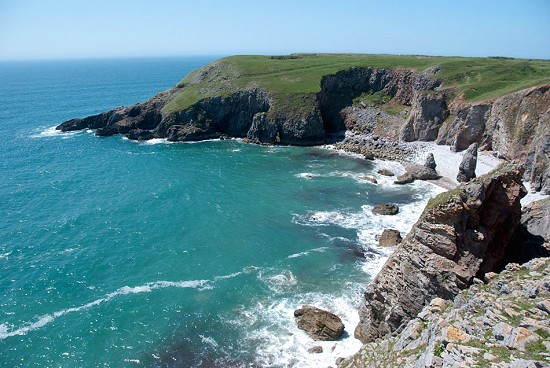
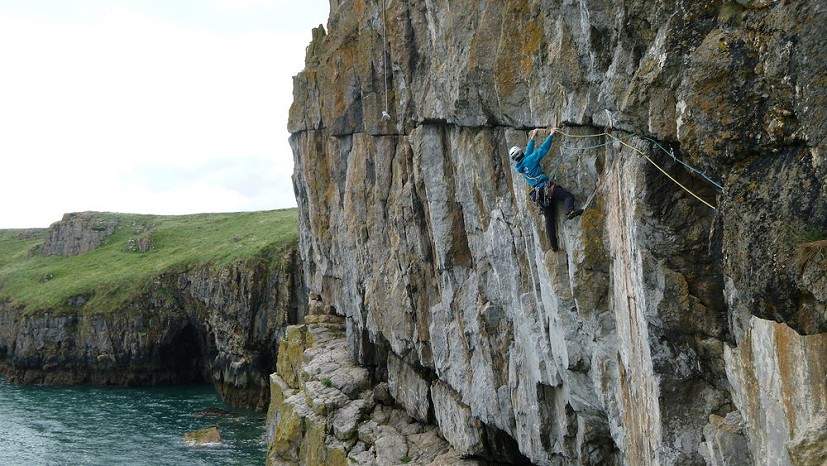

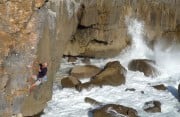

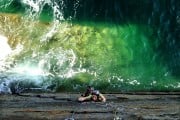

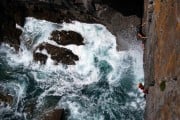






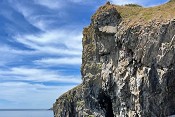
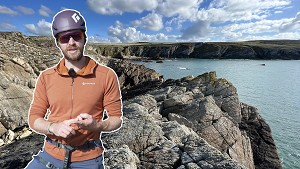

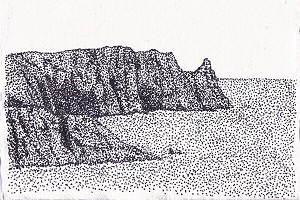
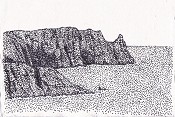



Comments